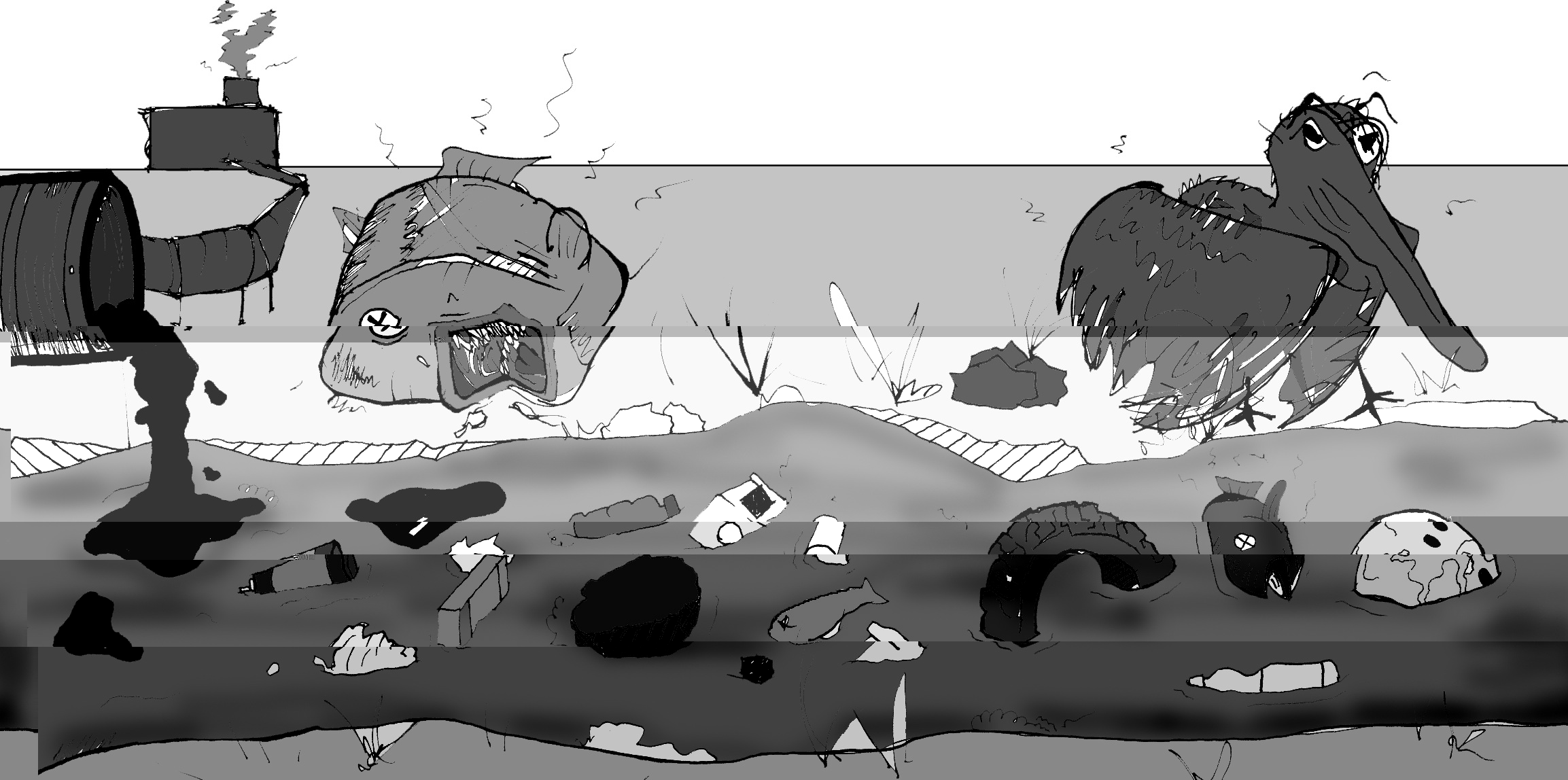Surviving the Anacostia: a feat for fish and environmentalists alike
D.C.'s ‘forgotten river' has a restoration plan and a chance at rebirth
A glance out at the river makes it clear there was a storm the night before. The water is coffee colored and moving swiftly, carrying tree trunks, soda bottles and soccer balls, basically any trash you can think of – it's all there.
In 2007, the Environmental Protection Agency (EPA) declared the Anacostia River to be "impaired by trash," the second river in the country to be designated as such. Politicians and advocacy groups are taking positive steps towards solving the Anacostia's pollution problems, but monetary and public support need to remain in place for the next decade in order for the Anacostia to improve substantially.The current pollution reduction strategy - the Anacostia Watershed Restoration Plan - is a ten-year, $17-billion plan that encompasses two counties and the District of Columbia. This effort focuses on the long term and, with support for the full decade, will significantly clean up the river. But with the region's current economic state, it is not unreasonable to worry that support for this expensive yet vital project might dissolve.
Currently, trash is a huge problem in the river; within Washington, D.C., there are 58 pieces of trash for every 100 feet, according to local officials. Each year, 800 tons of debris and trash - roughly equivalent to the weight of 72 school buses - enter the watershed, destroying the habitats of many plants and animals and causing the river to be both unsightly and unsafe. Three hundred years ago, the Anacostia Watershed was a pristine oasis of wetlands and wildlife. Since then, deforestation, urbanization, wetlands loss, erosion and river dredging have destroyed much of the watershed. Both loose government control of businesses and unchecked urban growth over a period of a hundred years have contributed to the pollution in the Anacostia. Former governments allowed the river to get to this abysmal state, and now the current generation has to deal with this legacy as well as new factors contributing to this environmental degradation.
Today, the biggest contributors to the trash in the Anacostia are dysfunctional storm-water drains, which get backed up during heavy rains. Montgomery and Prince George's counties are now legally bound to fix a significant percentage of their storm-water drains, with a budget of approximately $28 million over the next five years, according to Stephen Shofar, Watershed Manager at Montgomery County's Department of Environmental Protection. These drains will control the pollution that flows into tributary streams such as Sligo Creek and Northwest Branch. Most of the storm drains in the Blair area empty into the Anacostia.
Dana Minerva, executive director of the Anacostia Watershed Restoration Partnership, the organization that developed the current plan, believes that fixing storm-water drains will have a substantial impact on pollution and trash levels in the water. "I focus on storm water because it is not only bringing trash but other kinds of pollutants," she said. "Why look at one form when you can look at what is causing it?" Water flowing from the streets brings not only trash, but also fertilizers, sediment, animal waste, oil and grease, all of which contribute to high pollution levels.
In addition to fixing the drains, community outreach is vital to the success of the Anacostia plan. Every year, the Alice Ferguson Foundation hosts the Potomac River watershed cleanup on Earth Day, which includes the Potomac and the Anacostia. According to local officials, 251.9 tons of trash were removed from the Anacostia last year, and this amount has been growing over the past twenty-three years since the clean-up started.
The Alice Ferguson Foundation is one of many local groups that are working hard to keep the Anacostia clean and the public engaged in the effort. These community groups deserve commendation for their dedication to solving the river's problems, but the public must continue their support to ensure the groups' long-term success.
In evaluating the effectiveness of the Anacostia Watershed Restoration Plan, it is important to remember that the plan is designed to be effective over a long time period and is focused on prevention. It is much easier to fix the sewers once than to fight a never-ending battle against the faulty storm drains.
Under the Clean Water Act, Montgomery and P.G. counties as well as the District of Columbia are legally required to actively monitor and reduce pollution levels.
The actions of community groups and residents who use the waterways need to be committed to the Anacostia Restoration Plan and need to demonstrate their support for its full implementation. The river deserves nothing less.
Claire Sleigh. I love crew. Silver Chips should cover it. More »
Comments
No comments.
Please ensure that all comments are mature and responsible; they will go through moderation.
